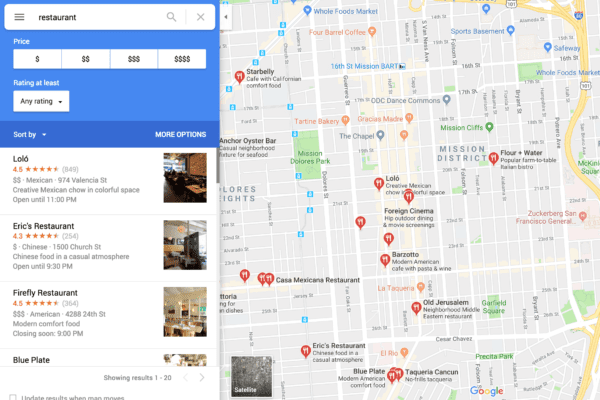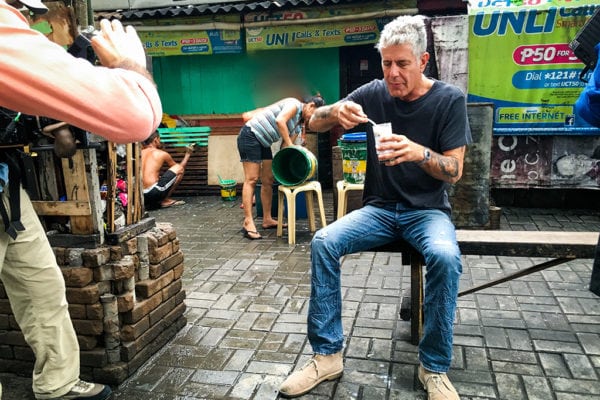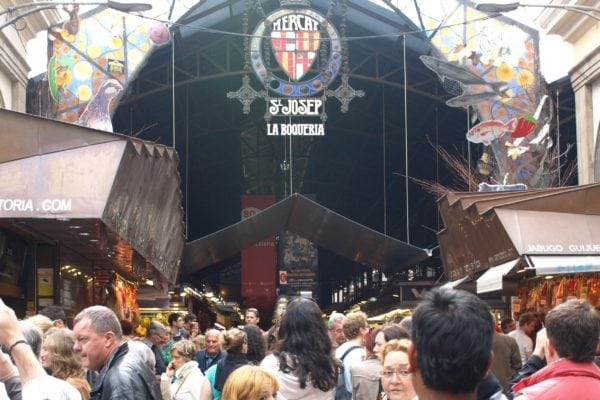SAD
The Heart of a Restaurant
Late last week, a fire that started at San Francisco Mission District restaurant Maverick all but destroyed the restaurant. That news is sad enough on its own, but then noted SF food writer Paolo Lucchesi posted one of the most heartbreaking Instagram images ever: owner Scott Youkilis and his young son, watching as firefighters worked inside of his restaurant. The image evoked a large and emotional response as patrons shared support over social channels. Later, the restaurant responded via Facebook, thanking patrons for their support and well-wishes, and assuring everyone they’ll “be back better and stronger.”
For sure, a fire — especially a fire that, as this one did, displaces residents who live above the restaurant, is an unbelievably devastating experience. But I can only hope for the folks at Maverick, that the ability to share and support over the Internet offered at least a little bit of consolation. Good, bad, happy, sad — these platforms allow us to connect with people and places we love and support, from any distance.
CHEFS WHO TWEET
Anthony Bourdain’s Vocal Position against the Seal Ban
Of all his platforms, Anthony Bourdain may achieve the greatest change through his Twitter account. Yesterday, he vocally opposed chefs supporting a ban on Canadian seal hunting. While the boycott has gone on for some time, last week 42 high-profile chefs, along with Food & Wine magazine, announced their support of the initiative. He went on about the debate for hours, noting that the ban will hurt indigenous people who rely on seal hunting for sustenance.
He also “feels bad” for the chefs who were “roped into supporting” the ban— a near-direct shot at @fandw’s stance on the topic. The issue is clearly heated, and no matter which side you take, you have to admit that @Bourdain’s tweets carry a strong message to a huge amount of people. I enjoy Bourdain’s strong opinions, especially on Twitter. His thoughts on this cause, bringing it serious attention, are no different. Hopefully, he’ll encourage more conversation and debate about the topic while educating his fans and followers at the same time. Perfect Twitter use case.

NEW
Why Restaurants Will Love New Google Maps
Have you seen the new Google Maps?
Besides being fast and well-designed and all of those other things that make an application useful, they’re perfect for businesses — especially restaurants. Better and faster search features allow you to find what you’re looking for with little detail. (“Sushi restaurants in Boston,” for example.) Instead of needing a business name (or, returning restaurant results only with “sushi” in their titles, as the previous incarnation did), Google does the legwork, returning restaurants listed directly on the map. (Bonus: it looks really, really nice.) Then, the new “cards” feature displays restaurant information, hours, phone numbers, reviews, photos and even directions.
The new Maps update contains plenty of new features, but for anyone searching for a spot to eat in unfamiliar territory, it’s a fantastic upgrade. That Google. man. Good stuff.
TESTING
When the Hostess Hands You an iPad
So here we are again with the iPad menus. Several different apps display menus and/or wine lists with varying degrees of interactivity, and this week, NPR’s The Salt gives a good rundown on current views about digital menus and lists. The obvious benefit: the ability to include far more information about available food and wine options. Just like when magazines and newspapers went digital, no longer was the content tightly constrained by text boxes that must fit precisely onto a page of paper. Digital menus can include background information, links, images, and other interesting, timely tidbits. And for some fast-casual restaurants, allowing guests to order via tablet streamlines the entire ordering-to-food-getting process.
Of course, the barrier to entry could be high. Tablets aren’t cheap and converting from an old method — a method that is so much a part of how restaurants have been run for a long time — comes with a learning curve. Plus, just as the debate between e-books and traditional paper books continues, so does the paper menu debate: some people just prefer the paper. (It must be said: even this technology lover prefers paper menus, perfect for saving and framing after special occasions!)
Still, given the number of apps and options (some restaurants are even investing in the technology themselves instead of partnering with an outside vendor), I expect this trend to rise. And, who knows — thanks to lighter, faster tablets capable of displaying lots of information, it might not be long until opinions shift into loving a screen-enhanced ordering process.
HMMM
Tracking Food Sickness on Twitter
Food poisoning: there’s an app for that. Or, there’s an app for tracking and avoiding it, at least. According to Wired, University of Rochester researchers were able to extract food-poisoning data from Twitter by searching for certain terms and then using the locations of geo-tagged tweets containing these terms to track foodborne illness.
Of course, this relies on lots of humanized factors, including when someone tweets about illness, where they might be at the time, how long it’s been since they’ve actually eaten the thing that made them sick, or whether or not they really got sick of if they just had one too many spicy enchiladas at dinner. For restaurants, food poisoning claims shared over the Internet can obviously be quite damaging; but if this information could be nuanced in a way to allow for accurate reporting of unsanitary and unsafe conditions, it could be used for a lot of good.
Digestifs
- Amazing, amazing photos here. The Art and Science of Modern Cuisine — The New Yorker
- How the world shops for groceries — Priceonomics
- Only from Japan: an iPhone accessory that creates food smells. Seriously. — NPR’s The Salt
- Do we love restaurant wait-line cameras? I think so! — Portland Food and Drink




